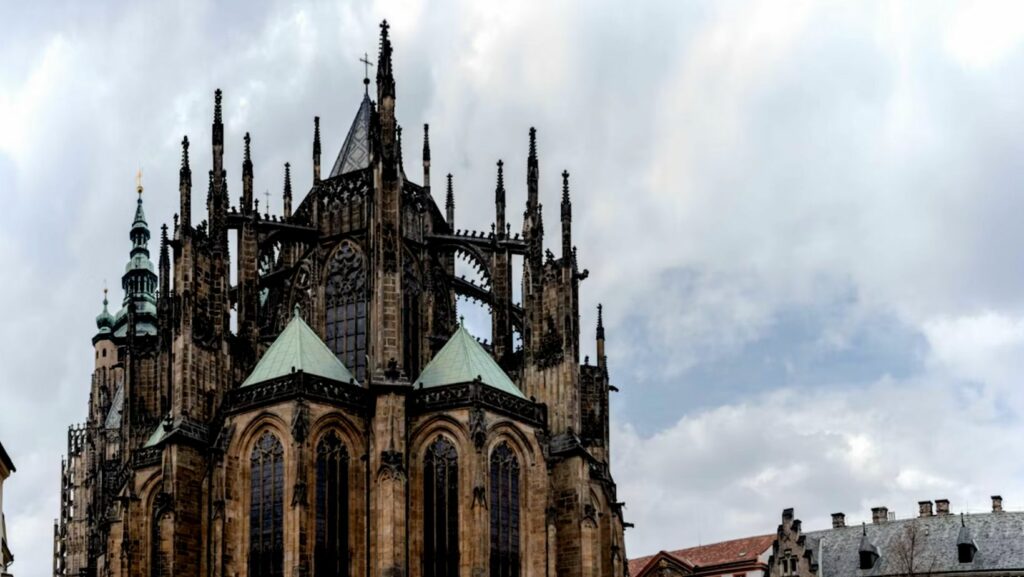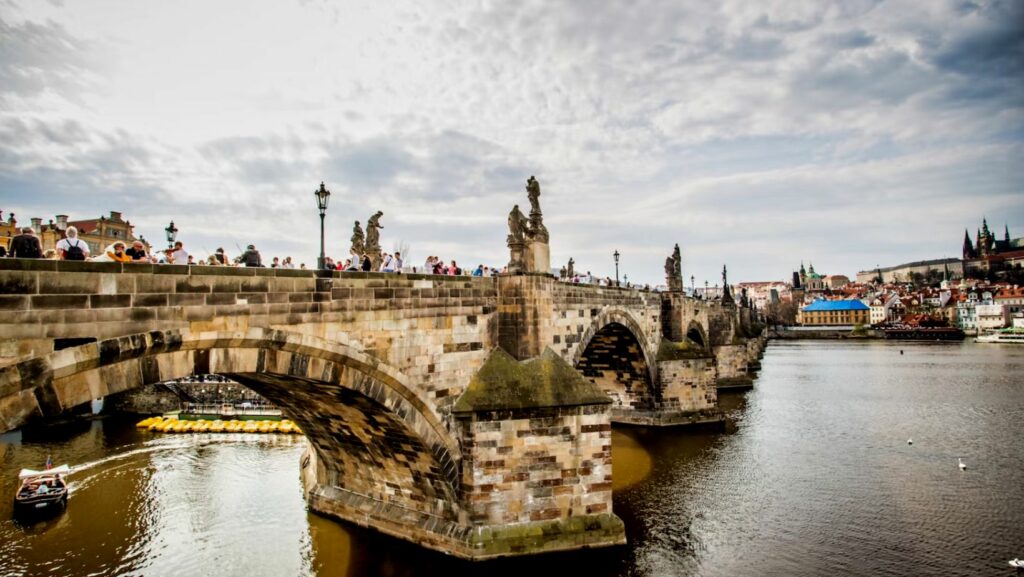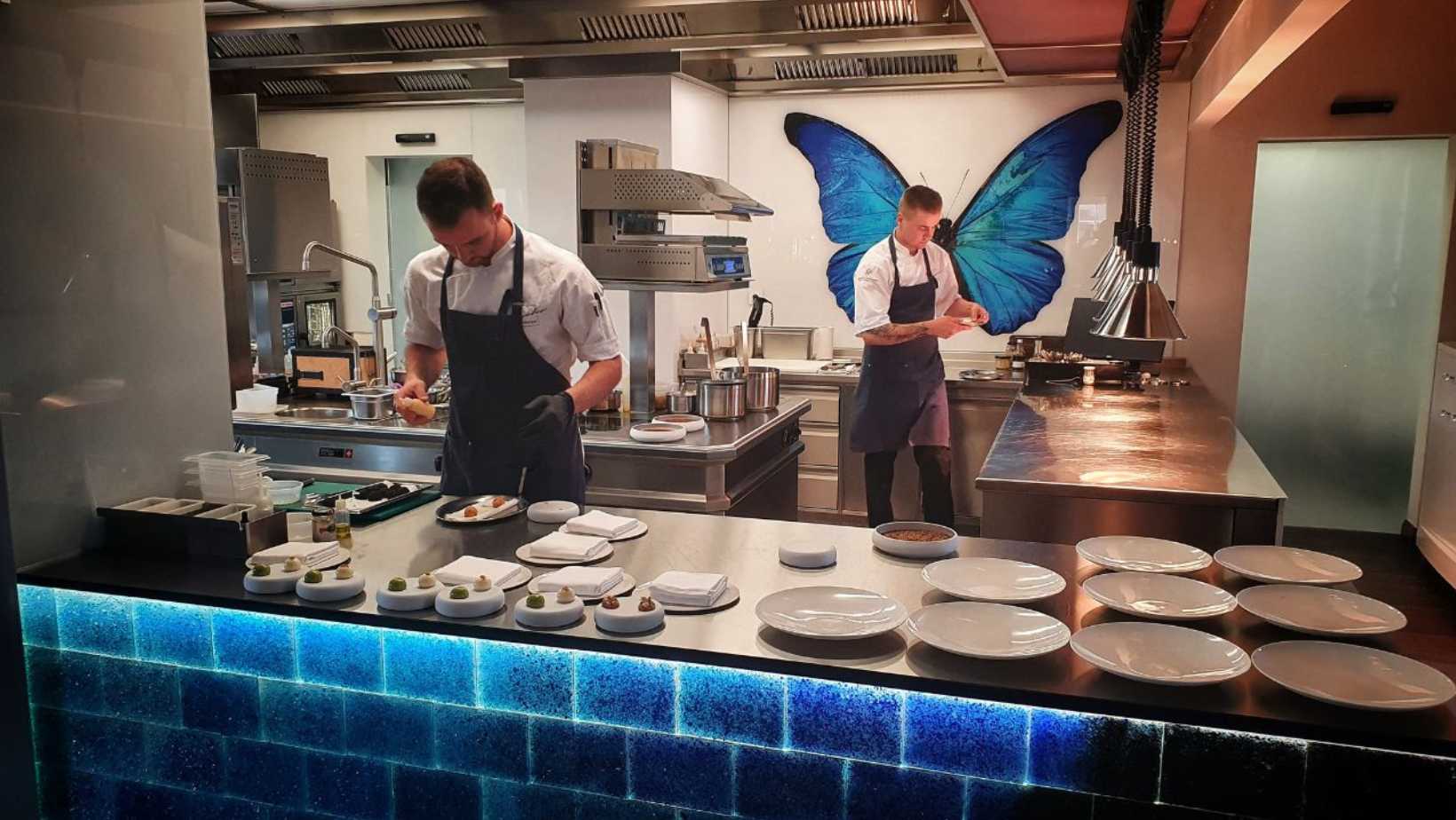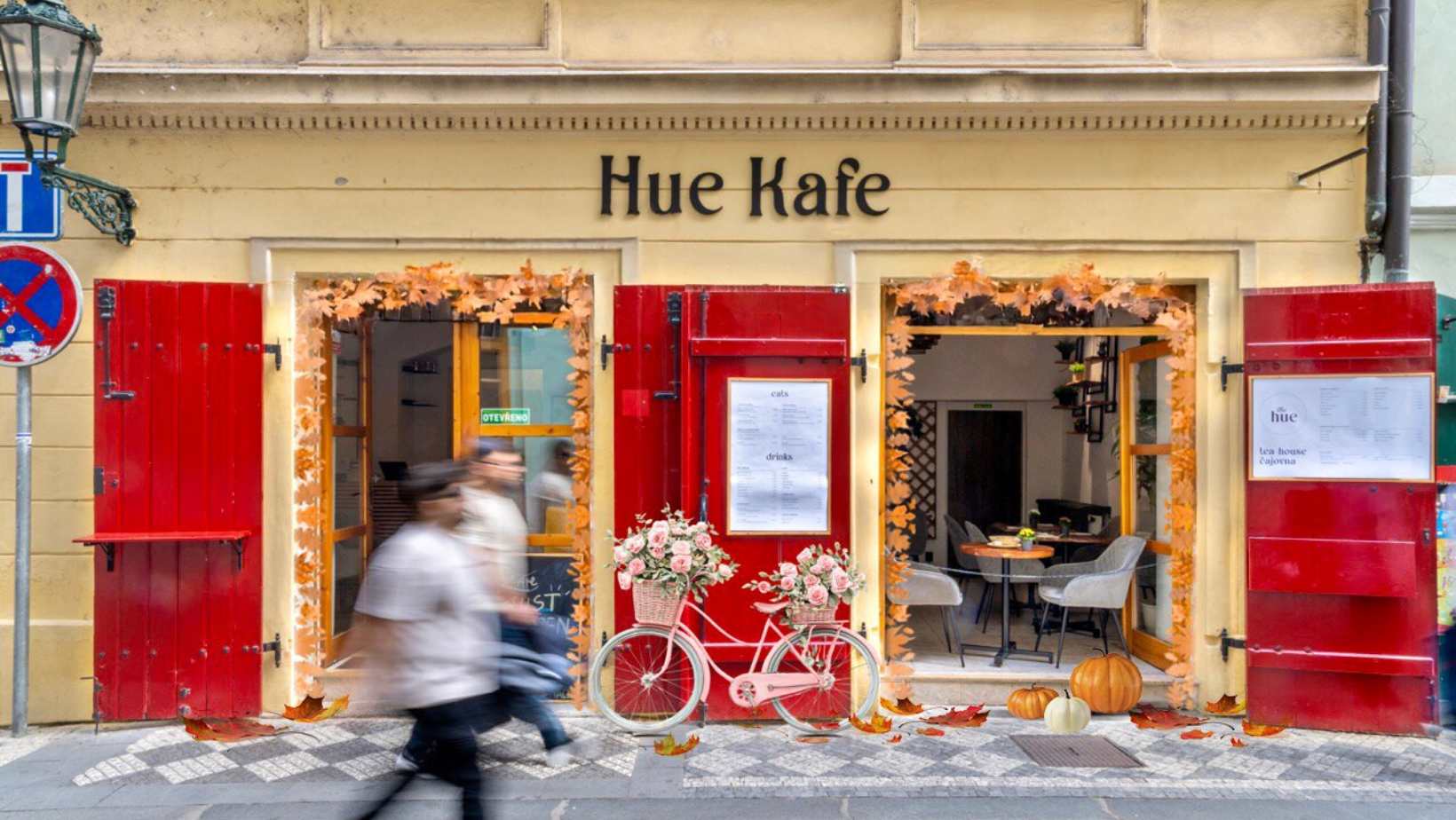Prague, or, as some call it, the City of a Hundred Spires, is undoubtedly one of the most beautiful cities in Europe.
However, behind its spectacular buildings, streets, and bridges stand fascinating history facts that can once and for all change the way you perceive the city.
As such, if you want to discover what makes the historical capital of Bohemia so remarkable, keep reading, as we’ll share some unbelievable Prague history facts!
1. Name Etymology
The name “Prague” is generally considered to have come from práh, a Slavic word that translates as “ford” or “rapid” (as in the section of a river with increased water velocity and turbulence). One can easily associate this term with the city’s origin and geographic location.
However, there’s more to this because this same term – práh – is also a word in the Czech language, and equals “threshold” in English.
This meaning has something to do with Libuše, a legendary ancestor of the Czech people. According to the legend, she and her husband Přemysl founded the city in the 18th century.
When the two arrived on the hill where the famous castle stands, Libuše supposedly had a vision. Afterward, she ordered her advisers to reach the hill where a man was building a threshold (práh) to his house. There, they would build the Praha castle, which later became the center of a city bearing the same name.
2. Construction of the Prague Castle

The Prague Castle
Legendary details set aside, we can now move to historical facts about the construction process of the famous Prague Castle. Its history dates as far back as 870, when it registered its first walled building called the Church of the Virgin Mary.
Over the following decades, this building shared the surrounding space with two brand new ones – St. Vitus Cathedral and St. George’s Basilica.
The expansion didn’t stop, as rulers ordered the construction, then rebuilding of numerous structures around the three. One of them was the vast Gothic church which took workers six centuries to complete.
In the mid-1500s, the castle suffered tremendous damage after a massive fire. Afterward, the Bohemian revolt caused other severe damage. Only in 1848, Empress Maria Theresa ordered a major renovation to offer Prague Castle its initial splendor.
Since 1918, the Prague Castle has been the seat of the republic’s president, and Pets Pavel is its current tenant.
Needless to say, the castle is one of (if not the main) tourist attractions in Prague! Depending on which ticket you choose, you can visit the Old Royal Palace, the Golden Lane, St. George’s Basilica, and St. Vitus Cathedral.
We strongly recommend not to miss the latter, as you’ll be able to see the famous Sword of Saint Wenceslas displayed in the cathedral’s Holy Cross Chapel The sword has tremendous historical value, and is often considered part of the Bohemian Crown Jewels. Sword enthusiasts definitely won’t want to miss it!
3. Did You Know These People Lived in Prague?
You won’t believe how many famous people called Prague home! Franz Kafka, for example, one of the world’s most renowned writers, was born in Prague and his resting place is the city’s New Jewish Cemetery. Prague even “hosts” the Franz Kafka Museum, so if you plan to visit the city, make sure to check it out.
However, Kafka living in Prague might not be such a huge surprise if you’re a literature enthusiast. But what about Milan Kundera, the author of the famous The Unbearable Lightness of Being? Did you know that he studied literature and aesthetics in Prague, then transferred to study film direction and script writing in the same city?
However, in 1979, Czechoslovakia revoked his citizenship. He was part of the process of reforming Czechoslovak communism, but eventually gave up and moved to France. He has been a French citizen ever since.
Albert Einstein is another famous historical figure who lived in Prague. In 1911, he became a professor of theoretical physics in Prague. During his stay in the city, he wrote eleven scientific papers.
Other iconic historical personalities who lived in Prague include Rainer Maria Rilke, Wolfgang Amadeus Mozart, Nikola Tesla, Martina Navratilova, and Madeleine Albright.
4. The Story Behind the Construction of Charles Bridge

Charles Bridge
Legend says that Charles IV, the King of Bohemia and Holy Roman Emperor, was the one to lay the first stone of the Charles Bridge that crosses the Vltava river. This happened at 5:31 on the morning of July 9, 1357.
This date seems unimportant to the “untrained” eye. However, numerologists might have noticed that this date and time formed a palindrome, meaning it reads the same backwards and forwards – 1357 9/7 5:31. If the construction started exactly at that time, the bridge would be of exceptional strength.
Regardless of whether this is true or not, the bridge stands till the present times and is currently part of a 20-year process of inspections and repairs.
Moreover, it’s the city’s most iconic place, as it features extraordinary architectural Gothic elements combined with other styles. Needless to say, the 30 Baroque statues one can see on the balustrade forms add to the bridge’s extensive historical and cultural value.
5. Prague Hosts One of Europe’s Oldest Universities

Charles University, Faculty of Law
Charles University of Prague is one of Central Europe’s oldest universities and the oldest and largest in the Czech Republic. The construction started in 1348, and the university opened its doors in 1349.
At the time, it consisted of four faculties: medicine, law, theology, and liberal arts. However, during the Hussite reformist movement, only one faculty remained active – that of liberal arts. After the Thirty Years’ War, the four faculties started operating again.
In 1882, the university suffered another change – it now consisted of two institutions, Czech University and German University. Both eventually became renowned academic structures.
In fact, the first president of Czechoslovakia was a professor at the Czech University (which later became Charles University).
Unfortunately, however, all higher education institutions in the region, Charles University included, stopped operating in 1939 after a student demonstration. They remained closed until World War II ended.
The hardship didn’t stop there, as the communist coup in 1948 brought new ideological disagreements, which affected the university as well.
6. The City’s Astronomical Clock
Did you know that the Prague Astronomical clock, also called Prague Orloj, is the world’s third-oldest? Obviously, it’s of incredible beauty and value and is, in fact, the oldest astronomical clock that actually still works!
Clockmaker Mikuláš of Kadaň, in association with Jan Šindel, a professor of astronomy and mathematics, created the clock in 1410. Over the years, other clockmakers added multiple elements to the clock’s structure and renovated it.
By far the most iconic elements of the clock are the animated figures: Vanity, Miser, Death, and Lust. Moreover, twelve statues of the Apostles appear above the clock hour after hour.
But what makes astronomical clocks so important? They don’t just tell time. They show the position of the Moon and the Sun and indicate zodiac constellations.
As such, add this clock to your bucket list and get your bags ready for an upcoming trip to the Czech Republic and the city of Prague implicitly! You’ll find the clock in the Old Town Square, more precisely on the southern wall of Old Town Hall. Besides the Prague Castle, the astronomical clock is definitely a must-see!
7. The Prague Spring
Last but not least, we’re ending our list of Prague history facts with details about a period of political liberalization called the Prague Spring. It started on January 5 and ended on August 21, 1968.
During this period, Alexander Dubček, the First Secretary of KSČ, the Communist Party of Czechoslovakia, tried to offer the citizens additional rights and freedom in regard to media, travel, and speech.
This period remained until the present day “a time of greatness of spirit,” during which the country and its people lived months of reawakening.
On the other hand, it was also a time of humiliation and fear, caused primarily by the external pressure coming from the Soviet Union. Eventually, on August 21, 1968, the Soviet Union invaded the country and suppressed the reforms.
-
NEWSLETTER
Subscribe for our daily news











